Anti-tank self-propelled guns "Object 416": why the project was closed
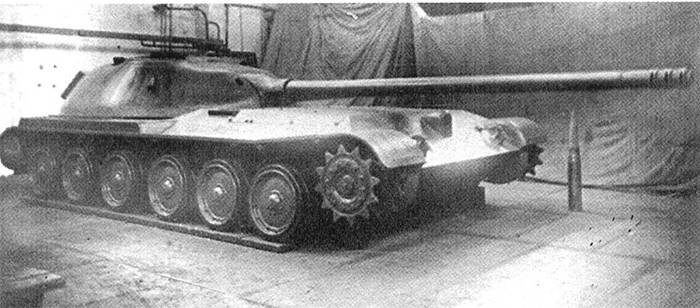
At the turn of the forties and fifties, the Soviet command took up the issue of replacing obsolete self-propelled artillery systems SU-76M and SU-100. Several new projects were launched, but not all of them gave real results. One of these projects led to the emergence of self-propelled guns "Object 416", built using a number of original solutions of various kinds. However, the excessive complexity and inconvenience of operation did not allow this sample to go beyond the tests.
At the design stage
The development of the new self-propelled guns, which soon received the code "416", was set by a resolution of the USSR Council of Ministers of October 15, 1949. Kharkiv Plant No. 75 was appointed the lead contractor. The customer demanded to create a new combat vehicle with weapons in the form of a 100 mm rifled gun and reinforced armor, capable of fighting tanks and fortifications. The preliminary design and layout of the fighting compartment should have been presented in the first quarter of the next 1950; Until the end of the year, a full-fledged prototype was expected.
The first version of "Object 416" in the form of documentation and a full-size layout was ready in March 1950. Design team led by P.P. Vasiliev proposed an armored vehicle with front-engine layout with the placement of the entire crew in the fighting compartment with a full-swing turret. The main weapon was the D-10T gun. The combat weight, according to calculations, reached 24 tons.
The model was presented to the Scientific and Technical Committee of GBTU, and he issued some recommendations. So, the car was considered overweight. The parameters of the D-10T gun were called insufficient and demanded to replace it with a more effective M-63 from Perm plant No. 172. There were also proposals for the placement of the crew, ammunition and other components.
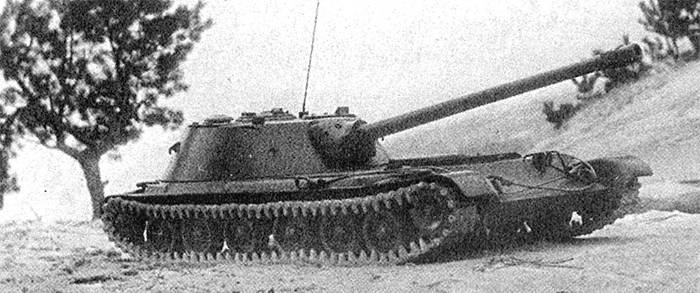
Changing the project took a little more than a month, and in May it was again presented by NTK GBTU. On May 27, the committee approved the outline design and allowed the transition to the stage of technical design. These works continued until the fall; On November 10, the technical project was approved, after which the development of working documentation began. At this stage, the project was finalized again, and its final version was ready in May 1951. In summer, the assembly of individual units for testing before the construction of a full-fledged prototype began.
Brand New Solutions
The promising “Object 416” had specific requirements in terms of combining protection, weapons, mobility and mass. All this made engineers look for and work out fundamentally new solutions. So, for the first time in domestic practice, the entire crew, including the driver, was placed inside the tower. In addition, a diesel engine DG of an unusual configuration for that time was used, which had minimal dimensions.
Significant changes were made during the refinement of the original project. By facilitating unprotected parts, they strengthened the reservation and improved the power plant. Pneumoelectric controls were replaced by hydraulic ones. About a third of the parts and assemblies were already in the series and did not require reorganization of production.
For the "Object 416" designed the original armored body, welded from sheets with a thickness of 20 to 75 mm, with maximum protection of the frontal projection. The front of the hull stood out for powertrain assemblies; all feed contained the fighting compartment. A cast turret was installed on it with a maximum armor thickness of 110 mm. The fighting compartment actually "stood" on the bottom of the hull, which allowed to reduce the height of the machine and generally reduce the frontal projection area.
The power plant was built on the basis of a 12-cylinder diesel engine DG with a capacity of 400 hp The transmission included dry friction friction, a two-shaft five-speed gearbox, a reduction gear, two two-stage planetary rotation gears and single-row final drives. Power was taken from the gearbox for the pumps of the hydraulic and pneumatic systems. In the fuel system there were tanks with a total capacity of 420 liters.
The chassis on each side included six single-disc track rollers with external cushioning and torsion bar suspension. Driving wheels of the pinion gear were located in the bow of the housing.
The main weapon of the “Object 416” was the 100-mm rifled gun M-63, made on the basis of the serial D-10T. She had a barrel length of 58 klb with a slotted muzzle brake. The gun mount provided vertical guidance in the range from -3 ° to + 15 °. When firing from a place, turning the turret ensured firing in any direction, while on the move — within the front sector 150 ° wide. Shooting was provided by the telescopic sight TSh2-22 and panoramic S-71.
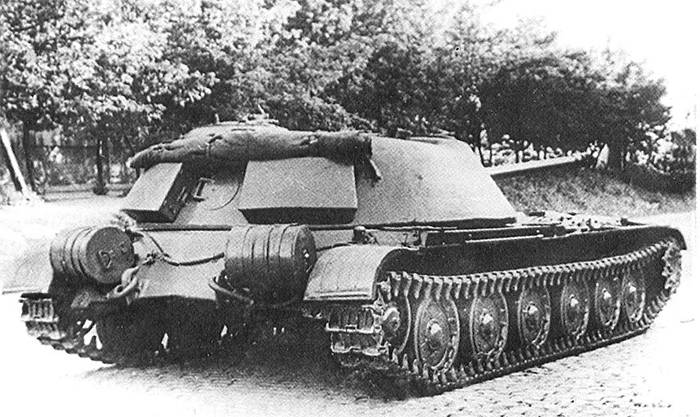
The gun received a sending mechanism for unitary shots. There were also mechanisms for supplying a shot to the loading line, simplifying the work of the crew. After the shot, the bore was blown through with compressed air. The ammunition consisted of 35 shells of various types. Applied mechanisms allowed one loader to provide a rate of fire of up to 5-6 rds / min.
Subsidiary weapon consisted of one coaxial machine gun SGM with an ammunition load of 1000 rounds. Also, the self-propelled guns carried two large smoke bombs at the rear of the hull with the possibility of discharge.
The car was driven by a crew of four. To the left of the gun, one after the other, the gunner and commander, to the right, the driver and loader. The roof of the tower provided hatches. The crew had a TPU-47 intercom and a 10-RT-26 radio station.
The driver, stationed in the fighting compartment, had to follow the road at any angle of rotation of the tower. For this, complex but effective solutions were used. The driver’s workplace was made as a separate unit rotating around a vertical axis. Automation tracked the position of the tower and with the help of a hydraulic drive held the driver parallel to the longitudinal axis of the hull. Observation of the road was carried out through periscopes on the hatch, synchronized with the workplace. The transfer of effort from the controls was carried out hydraulically.
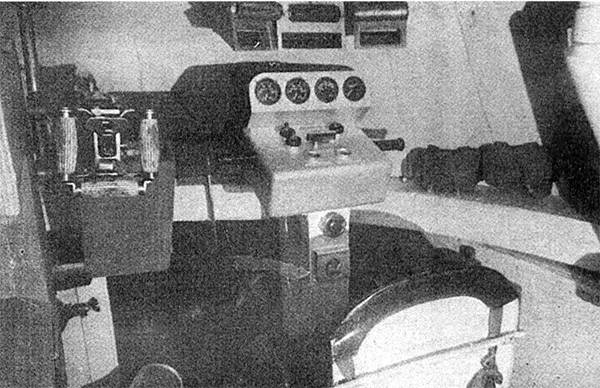
The length of the resulting self-propelled guns in the hull reached 6,3 m, with the gun forward - up to 8,5 m. Width - 3,24 m, height - only 1,82 m. Weight remained at 24 t. Estimated speed - 50 km / h , power reserve - up to 260 km.
Prototype on trials
At the end of the summer of 1951, the assembly of individual units for testing began in Kharkov, after which it was planned to use them on an experimental self-propelled guns. The assembly of the prototype was supposed to be carried out during November, and in early December it was supposed to go for testing. However, problems began at this stage. The subcontractors did not have time to provide the tower and the engine in time, which is why the assembly of the experimental "Object 416" began only on March 29, 1952.
At the end of May, the finished car was shown to the customer, after which it was sent to the Chuguevsky training ground for factory tests. From June 19 to November 12, self-propelled gun demonstrated its characteristics and capabilities. In parallel, the power unit and chassis were improved. The next stage of testing lasted until the summer of 1953 and pursued similar goals.
In August 1953, the 416 self-propelled guns were sent to the Leningrad artillery range for weapons testing. After the completion of these activities, in December of that year, they conducted a control run over rugged terrain. In total, during the factory tests, the prototype machine passed almost 3 thousand km in different areas and made several dozen shots. All this made it possible to gather enough information to analyze and determine its prospects.
Advantages and disadvantages
"Object 416" successfully combined a low weight and a high level of protection. In addition, the M-63 gun provided very high firepower for its time. One of the main differences of the 416 was the original layout of the engine compartment and the inhabited compartment, which made it possible to sharply reduce the diameter of the hull and turret, and therefore increase survivability on the battlefield. The DG engine, despite the novelty of the design, showed itself well both in independent tests and in an armored car.
The novelty of the design and original solutions as a whole were not a problem, but they led to significant difficulties. First of all, the inconvenience of the crew was noted: the driver’s rotating workplace was held parallel to the axis of the hull, but when the tower rotated, it moved perpendicular to it. For driving such a car required special skills. The back of the fighting compartment was low and cramped, which caused the loader to work while sitting or kneeling (this impaired his capabilities and affected the rate of fire). Finally, there were difficulties when shooting on the go.
Final: 100 mm caliber
Having considered the strengths and weaknesses, the project "416" decided to close. We also temporarily suspended the development of boxer diesel engines of the DG type. The only built self-propelled gun of a new type was sent for storage. Later she got to the museum (Kubinka), from where she recently moved to the open exposition of the Patriot park.
It should be noted that “Object 416” was not the last of its kind. In parallel with it was created self-propelled guns "105" / SU-100P with similar combat capabilities. After a long refinement, she even reached a small series and exploitation in the army. However, it soon became clear that promising anti-tank self-propelled guns needed more powerful weapons. The development of the 100 mm direction was stopped in favor of larger caliber systems.
- Ryabov Kirill
- Vitalykuzmin.net; Solyankin A. G., Pavlov M. V., Pavlov I. V., Zheltov I. G. "Domestic armored vehicles. XX century", Vol.3
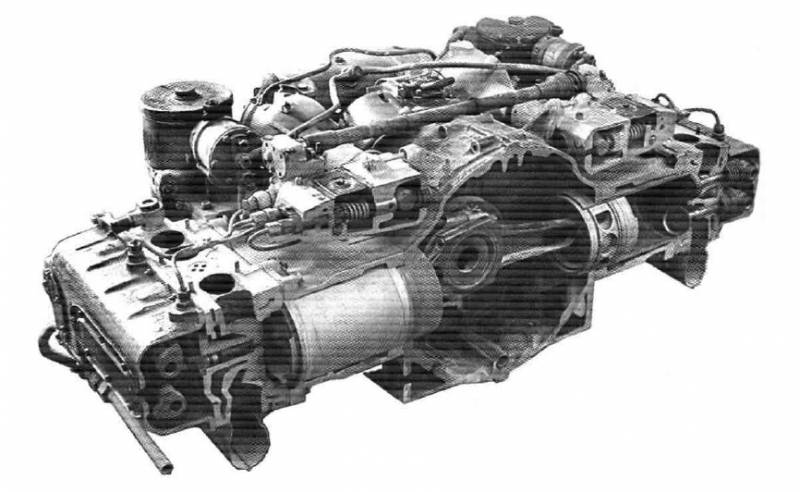
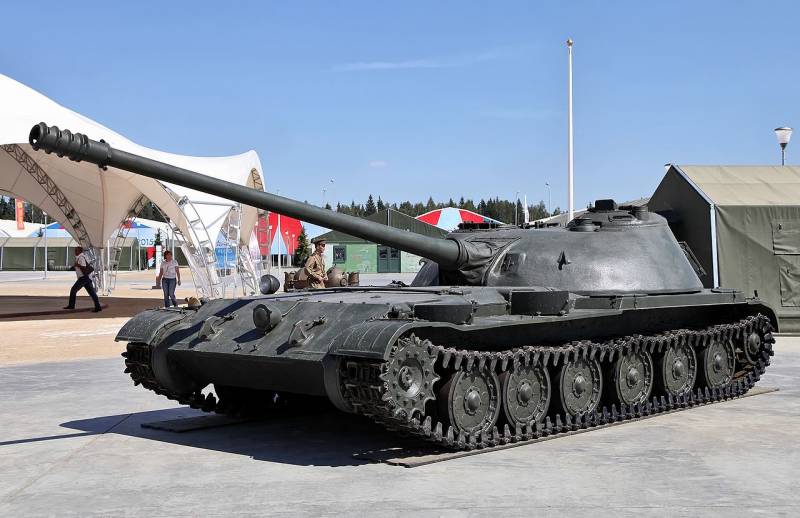
Information